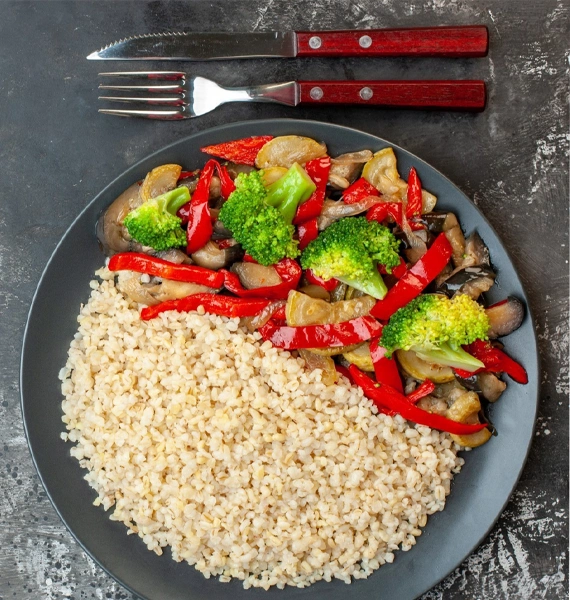

Top Health Benefits of Veggie Rice You Need to Know
This dish offers a wealth of essential nutrients, making it an excellent choice for those seeking a balanced and wholesome meal. Brown rice is rich in complex carbohydrates, fiber, and important vitamins such as B-vitamins, contributing to sustained energy levels and better digestive health. The array of colorful vegetables, including zucchini, bell pepper, broccoli, and mushrooms, provides a wide range of antioxidants, vitamins (A, C, K), and minerals like potassium and magnesium, which support immune function, bone health, and reduce inflammation. Additionally, this meal is high in fiber, which promotes digestion and helps maintain healthy blood sugar levels. The healthy fats from olive oil add monounsaturated fats, which are beneficial for heart health. By using plant-based ingredients, this dish is also low in saturated fats, making it ideal for anyone aiming to follow a heart-healthy, plant-based diet. Whether you are looking for a light meal or something to complement an active lifestyle, this dish provides a nutritious, satisfying option.
Recipe :
For 4 people
A light, delicious, and nutritious meal that provides enough energy for your daily activities! 🥦🍚🌱
When preparing this dish, a few key considerations can help ensure the best outcome. First, soaking the brown rice for a few hours before cooking can significantly reduce the cooking time and improve its texture. Brown rice has a longer cooking time compared to white rice, so it’s important to allow enough time for it to fully cook—typically 30 to 40 minutes. For the vegetables, it’s important to avoid overcooking them. Aim for a tender yet crisp texture to preserve their nutrients and vibrant color. When sautéing the vegetables, start by cooking the onion and garlic until soft before adding the other vegetables, as they require different cooking times. Keep the heat moderate to avoid burning the garlic and to ensure the vegetables are evenly cooked. Additionally, while olive oil provides healthy fats, it’s crucial to use it in moderation to keep the dish light, especially for those watching their caloric intake. Seasoning with salt, pepper, and optional soy sauce or lemon juice should be done towards the end of cooking to ensure the flavors balance well without overpowering the natural tastes of the vegetables.

This dish is a great choice for a variety of diets, particularly plant-based ones. It's Vegan and Vegetarian, making it suitable for those who avoid animal products. It's also Gluten-Free, as brown rice and vegetables are naturally free from gluten, making it an ideal option for those with gluten sensitivity or celiac disease. The dish is Low Calorie, which can be beneficial for anyone looking to maintain or lose weight, especially when the amount of oil used is controlled. However, this dish may not be suitable for those following a Ketogenic Diet due to the high carbohydrate content from the brown rice. Similarly, it's not in line with a Paleo Diet, which excludes grains, including rice. People on a DASH Diet (Dietary Approaches to Stop Hypertension) may also need to limit their intake of rice due to its carbohydrate content, which can impact blood sugar levels. While this dish is rich in essential vitamins, minerals, and fiber, it's not particularly high in protein, which might be a consideration for those on a High-Protein Diet. Those looking for more protein could easily add plant-based protein sources like tofu, tempeh, or legumes. Additionally, this dish may not align with strict Intermittent Fasting regimens, depending on how calorie-restricted the individual’s eating window is, as the portion sizes can be quite filling.
...